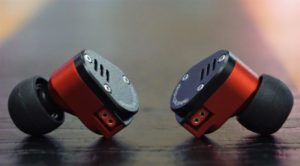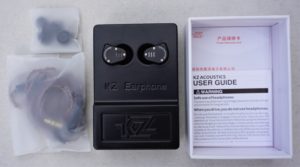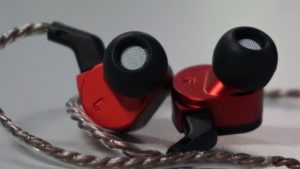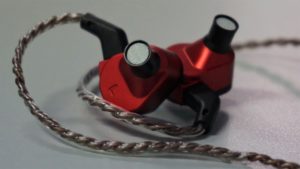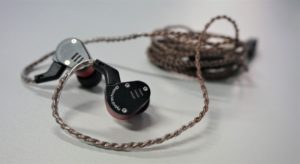KZ is no stranger to most Chi-fi fans and 2018 has been a banner year so far for new releases. In this review, we examine the ZsA, a multi-driver hybrid in an aluminum shell. The ZsA was sent to me by Gearbest, in exchange for an honest review. I thank Gearbest for the opportunity to try new gear. Always a privilege.
Packaging:
KZs packaging remains pretty utilitarian. White cardboard slider over a cardboard rear box with a clear face. Plastic tray holding the buds with tips, cable and accessories hiding underneath it. Nothing fancy, but perfectly usable for its purpose and at least their packaging seems to make the trip across the ocean in one piece. Unlike some other brands I have received recently where the box looked a bit like it was delivered by Ace Ventura UPS man.
Build:
The ZsA continues the lineage started by the Zs6 of aluminum shelled IEMS and KZ seems to have learned from some of the comments regarding fit of the Zs6. The ZsA is roughly 2/3 the size of the Zs6 and all the corners have been rounded off leaving an almost teardrop shaped iem with the wider section toward the rear of the ear. My sample is bi-color with red body and black face plates. Anodizing is good throughout and color matching of the parts is good as well. The face plate has 3 vertical vents for the Dynamic while the inside of the shell is devoid of any venting. I like this arrangement as it prevents issues with movement blocking a vent and changing the signature. The nozzles do have a lip to prevent tip-slip too unlike some previous generations of Kz.

Cable:
The cable deserves its own section as KZ has stepped up its game when it comes to cables on recent models. The Cable is brown with black fittings and braided nicely. Starting at the 3.5mm Jack the cable exits at a 90 degree angle with minimal strain relief and runs roughly ½ the length of the cable to the splitter. Again, the splitter has minimal strain reliefs and with the split being so far down the cable a chin slider is really needed. Unfortunately, no such thing is provided. I improvised with a dental braces rubber band which effectively moves the splitter up to more normal position. At the earpiece end are memory wires that are easily removed for those that don’t prefer them and .78mm bi-pin connectors. Overall, I’d love to see the split moved to the ¾ mark, a chin slider, and better strain reliefs on the next generation, but at least these are a marked step forward from earlier revisions.
Microphone:
The single button microphone works reasonably well but is positioned a bit too low on the cable so rubbing on a shirt during conversations while on the move introduces a bit of excess noise. I’m not a big fan of microphones on my cables as I don’t tend to use a phone as a DAP but for those who do this may be a consideration.

Sound:
KZ has become known for the deep V signature with aggressive treble presentation and my expectation of the ZsA as a little brother to the Zs6 was that it would follow in its footsteps. I expected a stripped down version of the Zs6 sound with the single dynamic driver and single BA. In some respects the sound is still very much the big bass and big treble, but in others it shows KZ is maturing.
Bass:
Sub-Bass extension is good with the ZsA easily reaching down into the 40hz range before experiencing significant roll-off. Mid-bass is very forward but fairly well controlled. There is some mid-bass bleed into the mids which contributes to a warmer signature than found on the Zs6. That combined with more texture than expected in the mid-bass makes the signature different than previous generations of Kz and very similar to the ES4 in presentation. Make no mistake, bass is dominant so if that isn’t your pleasure, you may want to look elsewhere.
Mids:
With the previous comments regarding bass-bleed, one would think the mids would be poor on the ZsA but while there is perceptible bleed and mids are certainly recessed when compared to the Bass and Treble, they have more texture and are better presented than previous generations. It seems KZ’s deep V has gotten quite a bit shallower on recent models especially the upper mids. While the lower mids feel recessed and male vocals can be slightly thin as a result, upper mids and lower treble are emphasized more and bring female and higher pitched vocals forward. I am perhaps the only person listening to these this critically, but the tuning puts viola as slightly recessed and violin as mildly forward and makes for odd listening on orchestral pieces.
Treble:
As previously mentioned, the lower treble is emphasized and treble in the overall is forward of the mids as is typical of KZ’s house sound. The ZsA can be a bit aggressive and sibilance is still possible but not nearly as likely as it was on the Zs6 or Zs5v2. At the top end, treble extension is good, but not great which interferes some with reproduction of cymbals and the like. I also noticed the ZsA has a tendency to distort the treble as the volume increases and is best used at moderate listening levels. This is probably partially due to the sensitivity of the ZsA which is quite high so extra power is not needed or necessarily appreciated.
Soundstage is wider than deep and is only average for the class. Instrument separation is good but the ZsA can get overwhelmed by busy passages and gets muddy when this happens.
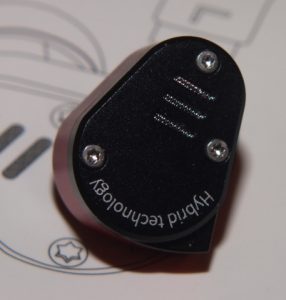
Thoughts:
Overall the little brother of the Zs6 is very much just that. It doesn’t have the detail or the separation or the soundstage of its big brother, but it comes closer than one might expect with half the drivers, and it manages to do so with a more listener friendly tuning and better mids. I think for those that like a V signature, the ZsA is a steal at a price of <$20. For those who prefer a bit more mid-centric presentation the ES4 gets the nod. KZ is improving with every new generation and their latest round of products shows that. If you haven’t heard a KZ in awhile, you should, they’ve come a long way since the early days.
Packaging:
KZs packaging remains pretty utilitarian. White cardboard slider over a cardboard rear box with a clear face. Plastic tray holding the buds with tips, cable and accessories hiding underneath it. Nothing fancy, but perfectly usable for its purpose and at least their packaging seems to make the trip across the ocean in one piece. Unlike some other brands I have received recently where the box looked a bit like it was delivered by Ace Ventura UPS man.
Build:
The ZsA continues the lineage started by the Zs6 of aluminum shelled IEMS and KZ seems to have learned from some of the comments regarding fit of the Zs6. The ZsA is roughly 2/3 the size of the Zs6 and all the corners have been rounded off leaving an almost teardrop shaped iem with the wider section toward the rear of the ear. My sample is bi-color with red body and black face plates. Anodizing is good throughout and color matching of the parts is good as well. The face plate has 3 vertical vents for the Dynamic while the inside of the shell is devoid of any venting. I like this arrangement as it prevents issues with movement blocking a vent and changing the signature. The nozzles do have a lip to prevent tip-slip too unlike some previous generations of Kz.

Cable:
The cable deserves its own section as KZ has stepped up its game when it comes to cables on recent models. The Cable is brown with black fittings and braided nicely. Starting at the 3.5mm Jack the cable exits at a 90 degree angle with minimal strain relief and runs roughly ½ the length of the cable to the splitter. Again, the splitter has minimal strain reliefs and with the split being so far down the cable a chin slider is really needed. Unfortunately, no such thing is provided. I improvised with a dental braces rubber band which effectively moves the splitter up to more normal position. At the earpiece end are memory wires that are easily removed for those that don’t prefer them and .78mm bi-pin connectors. Overall, I’d love to see the split moved to the ¾ mark, a chin slider, and better strain reliefs on the next generation, but at least these are a marked step forward from earlier revisions.
Microphone:
The single button microphone works reasonably well but is positioned a bit too low on the cable so rubbing on a shirt during conversations while on the move introduces a bit of excess noise. I’m not a big fan of microphones on my cables as I don’t tend to use a phone as a DAP but for those who do this may be a consideration.

Sound:
KZ has become known for the deep V signature with aggressive treble presentation and my expectation of the ZsA as a little brother to the Zs6 was that it would follow in its footsteps. I expected a stripped down version of the Zs6 sound with the single dynamic driver and single BA. In some respects the sound is still very much the big bass and big treble, but in others it shows KZ is maturing.
Bass:
Sub-Bass extension is good with the ZsA easily reaching down into the 40hz range before experiencing significant roll-off. Mid-bass is very forward but fairly well controlled. There is some mid-bass bleed into the mids which contributes to a warmer signature than found on the Zs6. That combined with more texture than expected in the mid-bass makes the signature different than previous generations of Kz and very similar to the ES4 in presentation. Make no mistake, bass is dominant so if that isn’t your pleasure, you may want to look elsewhere.
Mids:
With the previous comments regarding bass-bleed, one would think the mids would be poor on the ZsA but while there is perceptible bleed and mids are certainly recessed when compared to the Bass and Treble, they have more texture and are better presented than previous generations. It seems KZ’s deep V has gotten quite a bit shallower on recent models especially the upper mids. While the lower mids feel recessed and male vocals can be slightly thin as a result, upper mids and lower treble are emphasized more and bring female and higher pitched vocals forward. I am perhaps the only person listening to these this critically, but the tuning puts viola as slightly recessed and violin as mildly forward and makes for odd listening on orchestral pieces.
Treble:
As previously mentioned, the lower treble is emphasized and treble in the overall is forward of the mids as is typical of KZ’s house sound. The ZsA can be a bit aggressive and sibilance is still possible but not nearly as likely as it was on the Zs6 or Zs5v2. At the top end, treble extension is good, but not great which interferes some with reproduction of cymbals and the like. I also noticed the ZsA has a tendency to distort the treble as the volume increases and is best used at moderate listening levels. This is probably partially due to the sensitivity of the ZsA which is quite high so extra power is not needed or necessarily appreciated.
Soundstage is wider than deep and is only average for the class. Instrument separation is good but the ZsA can get overwhelmed by busy passages and gets muddy when this happens.

Thoughts:
Overall the little brother of the Zs6 is very much just that. It doesn’t have the detail or the separation or the soundstage of its big brother, but it comes closer than one might expect with half the drivers, and it manages to do so with a more listener friendly tuning and better mids. I think for those that like a V signature, the ZsA is a steal at a price of <$20. For those who prefer a bit more mid-centric presentation the ES4 gets the nod. KZ is improving with every new generation and their latest round of products shows that. If you haven’t heard a KZ in awhile, you should, they’ve come a long way since the early days.











